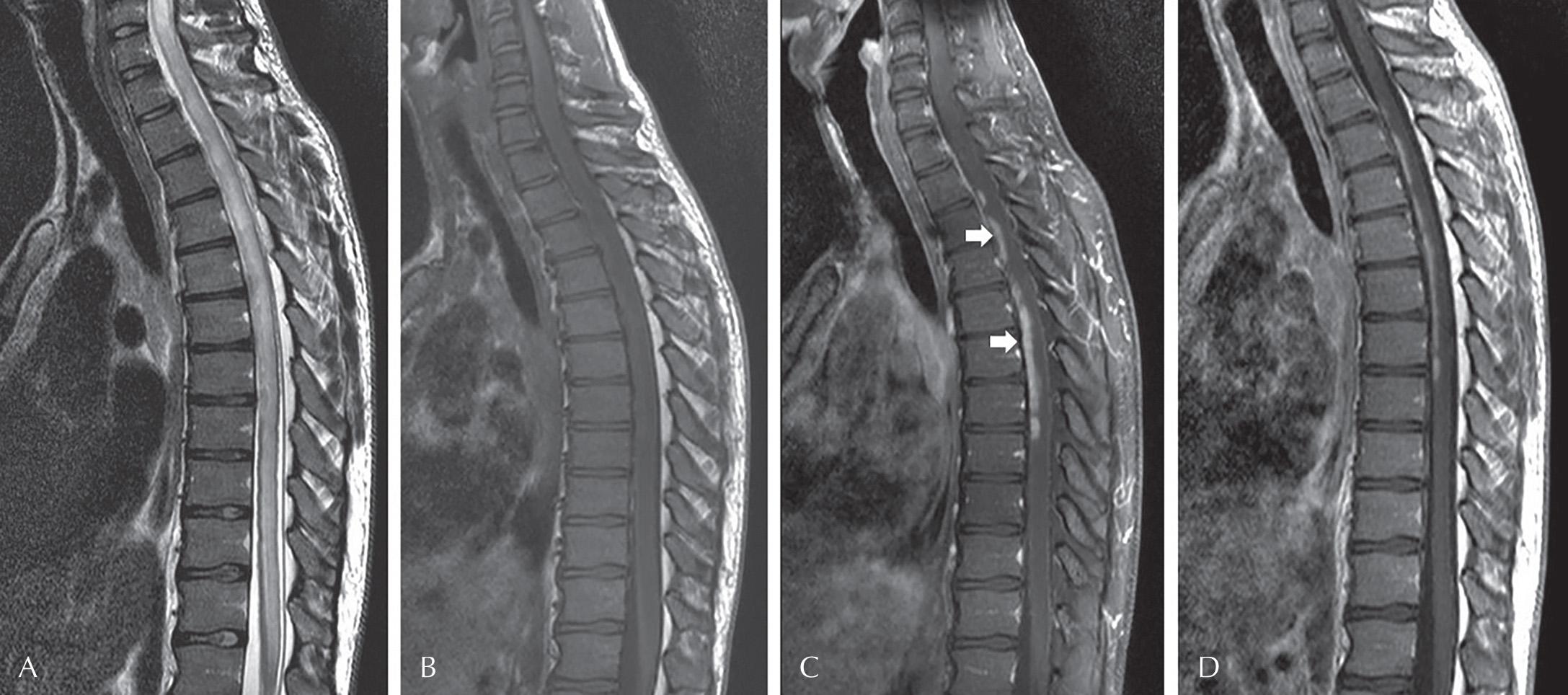Physical Address
304 North Cardinal St.
Dorchester Center, MA 02124
Sarcoidosis is a multisystem granulomatous autoinflammatory disorder that typically affects lungs, lymph nodes, and skin. The nervous system is involved in 5% to 20% of patients with sarcoidosis. Neurosarcoidosis (NS) has a predilection for the meninges (resulting in cranial neuropathies and radiculopathies), pituitary gland, hypothalamus, and orbital apex but can involve any level of the neuraxis including the brain parenchyma, cerebellum, spinal cord, peripheral nerves, and muscle. Given its protean manifestations, a high clinical suspicion is necessary to identify NS as a diagnostic possibility, not least for its potential to cause long-term disability if untreated.
A 31-year-old man experienced gradually progressive tingling and numbness from the nipples down to his feet on both sides accompanied by weakness in the lower limbs and symptoms of urinary retention. He experienced shocklike paresthesias in his back and lower limbs with neck flexion (Lhermitte sign). A week later he developed painless lumpy swellings in the cheeks and anterior neck that gradually decreased in size over the subsequent several weeks. During this time, he developed a chronic nonproductive cough and shortness of breath. He did not have a rash or difficulty with vision. On examination, he had mild asymmetric spastic paraparesis with extensor plantar responses. He had a spastic gait and a truncal sensory level at approximately T5.
The patient underwent magnetic resonance imaging (MRI) of the cervical and thoracic spine, which revealed an intramedullary, expansile, T2-hyperintense lesion extending from the level of the C4 vertebral body to just above the conus medullaris with nodular enhancement along the ventral aspect of the lesion between the T2 and T8 levels ( Fig. 47.1 ). Computed tomography (CT) of the chest, abdomen, and pelvis revealed extensive mediastinal and hilar lymphadenopathy as well as multiple small pulmonary nodules. A transbronchial lung biopsy was performed showing noncaseating granulomatous inflammation in the lung parenchyma. Acid-fast, periodic acid–Schiff, and Gomori methenamine silver stains were negative for acid-fast and fungal organisms. In retrospect, it was thought that he had also had parotitis based upon the history of transient cheek swelling.

Treatment was started with oral prednisone 1 mg/kg for 4 weeks followed by a gradual taper over 6 months. The patient's symptoms ceased progressing soon after the initiation of treatment, and over the ensuing months he experienced modest improvement but not complete resolution of symptoms, signs, or radiographic abnormalities.
Isolated nervous system involvement is uncommon (observed in 5%–17% of patients with NS). The worldwide prevalence of sarcoidosis is 1 to 40 per 100,000, with a relatively higher rate in women and in people of African or Scandinavian descent. Onset is typically in the third to fifth decades of life.
Become a Clinical Tree membership for Full access and enjoy Unlimited articles
If you are a member. Log in here